Large-flowered clematis: varieties, planting, care and reproduction
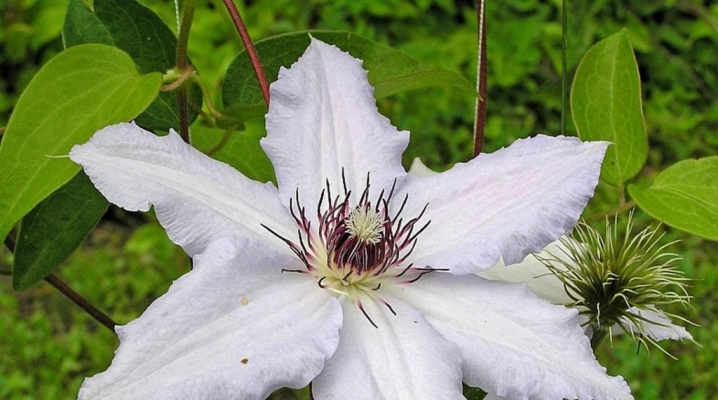
Interest in clematis among gardeners is growing every year. A variety of species, varieties, colors allows you to effectively decorate the site. Clematis can be liana-like, herbaceous, semi-shrub. Large-flowered clematis is the most popular variety, the varieties of which are distinguished by spectacular and abundant flowering. This plant is often used to decorate gazebos, fences and fences, outbuildings, stairs and other elements of the garden area.

Description
Types of clematis are striking in their variety: deciduous, evergreen, small and medium-flowered. The number of varieties fluctuates around 300, and this figure is growing every year. This plant is often referred to as clematis. It grows on different continents, you will not find it only in Antarctica. The flower grows in valleys, steppes, forest belts, on river banks, in gorges, on rocky placers. External characteristics are as follows:
- foliage can be steamy or simple;
- the leaves are combined by 3, 5 or 7;
- the color of the foliage is mainly green, but there are also shades of crimson with purple;
- flowering of both sexes is presented in different forms: semi-umbilical, panicle, corymbose;
- this plant has arachnid lush pistil-stamen formations in the center;
- the color can be either one-color or very intricate, there are a huge number of shades of snow-white, yellow, heavenly, pinkish, heavenly, purple;
- the aroma of many varieties is pronounced and similar to jasmine, almond.
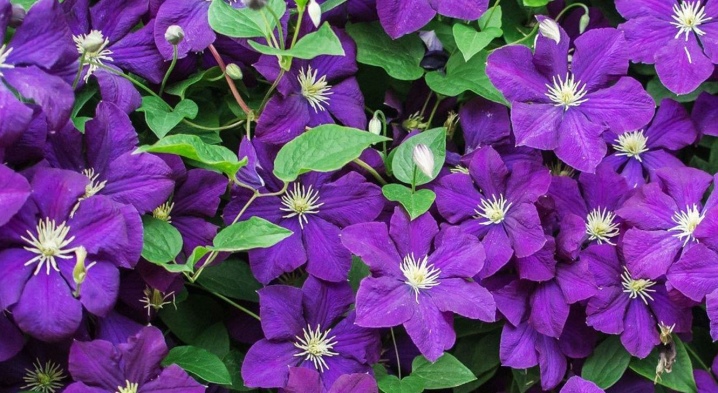
Classification
The parameters for dividing a given plant into groups can be different, often classified by shape, color. The main sign by which clematis is distinguished is the amount of flowering:
- small-flowered - up to 5 cm in diameter;
- mid-flowered - up to 8 cm;
- large-flowered - from 8 cm and more.

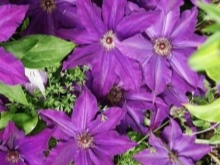

The last group is very numerous, it is represented by a large number of varieties, subspecies. Small-flowered clematis are also a very diverse group, less whimsical to growing conditions than large-flowered ones. This must be taken into account when choosing a variety. Another popular classification that allows you to choose flowers so that the landscape is beautiful throughout the season: early flowering and late flowering.
Early clematis begin to bloom in spring before the beginning of summer, late varieties bloom later, but also bloom until autumn.
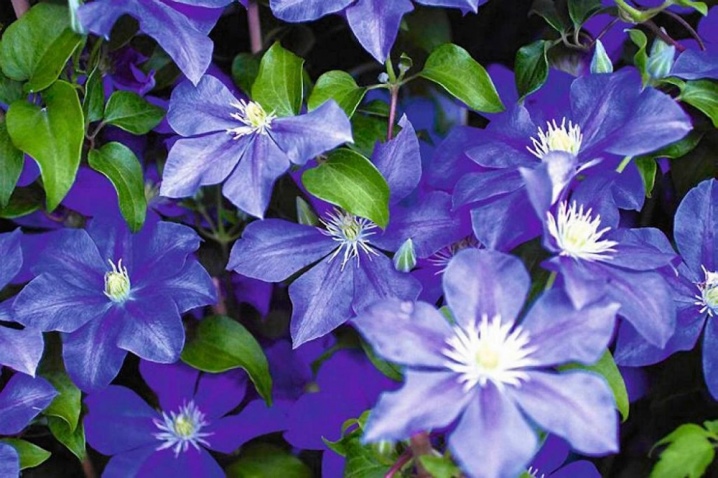
Which to choose?
The varieties of this group are varied in shape and color, which makes clematis popular with both specialists and novice gardeners. The choice of a variety is important not only from the point of view of aesthetics, but also from the growing region. Siberia, the Far East, the Middle zone, the European part of Russia are suitable for breeding early and mid-early clematis. In these regions, winters are rather harsh and summers are short. The varieties are perfect for these areas:
Viticella;
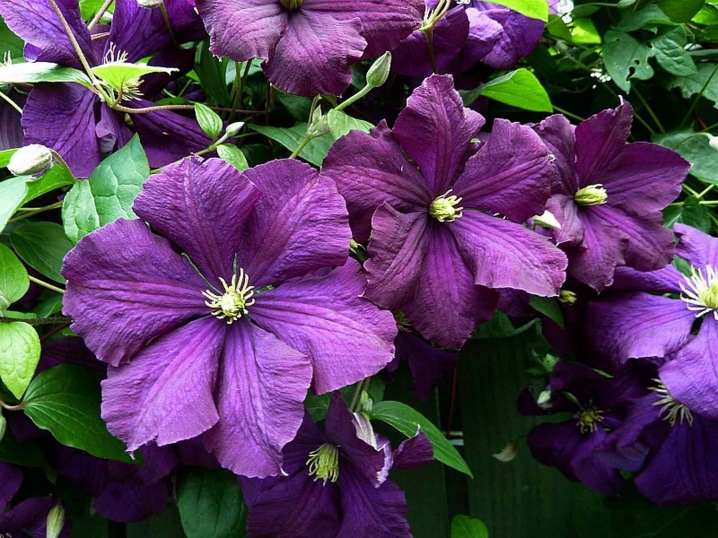
- "Zhakman";

- Integrifolia.

If you are just starting to breed clematis, it is worth contacting varietal representatives who do not need shoots in the winter.
The large-flowered group is mainly represented by varieties of the hybrid type. Gardeners distinguish the main subgroups, in which flowering falls on new and last year's branches. According to this sign There are 3 groups of plant pruning. Most large-flowered varieties form buds on the top of the shoots. This point is important for choosing a suitable support.
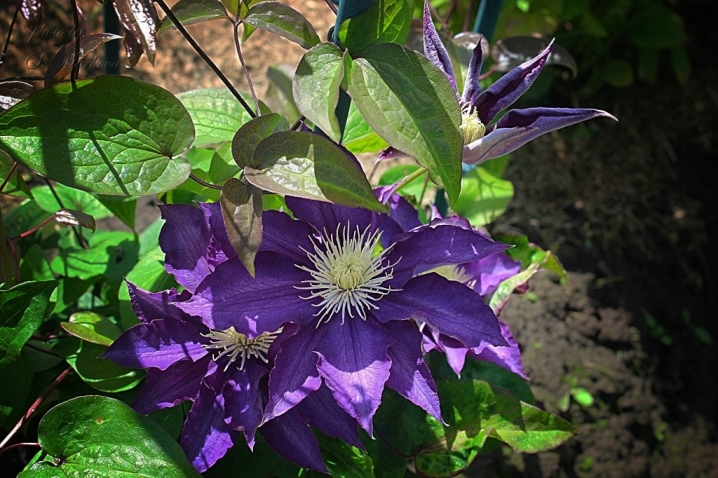
Subspecies and varieties
There are a lot of spectacular varieties of large-flowered group, almost all of them have high decorative properties, due to luxurious buds and flowering. First of all, the main types of clematis are represented by groups:
"Zhakman";
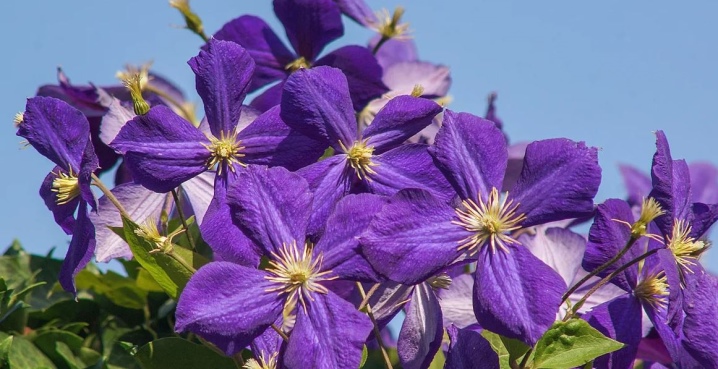
- Lanuginoza;
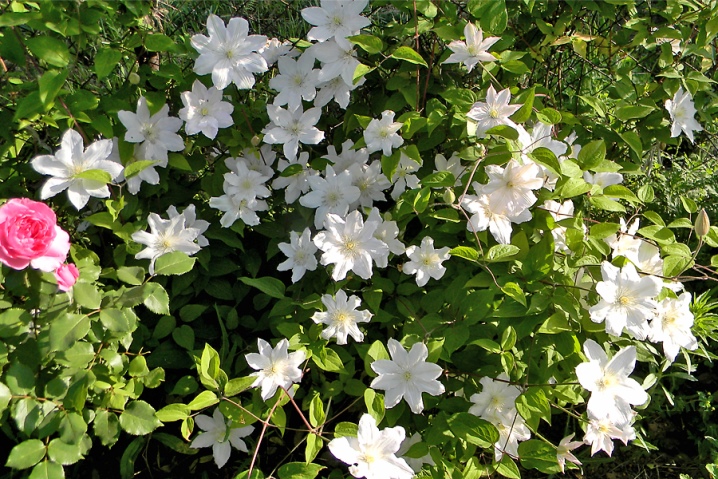
- Patens;
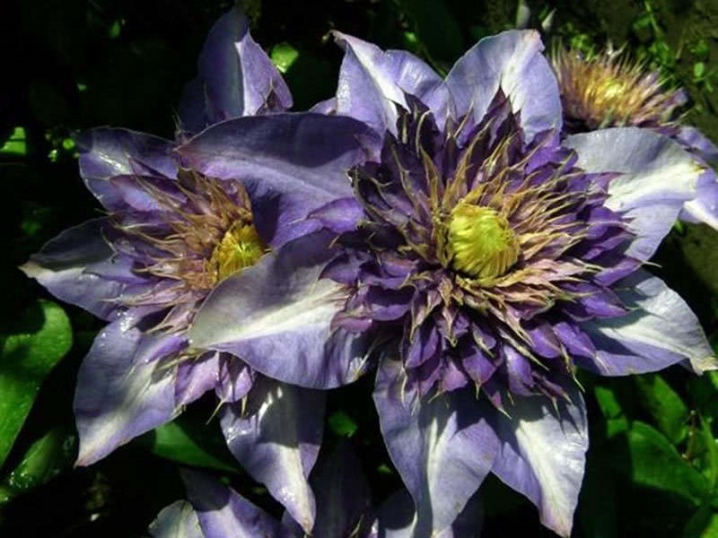
- Viticella;
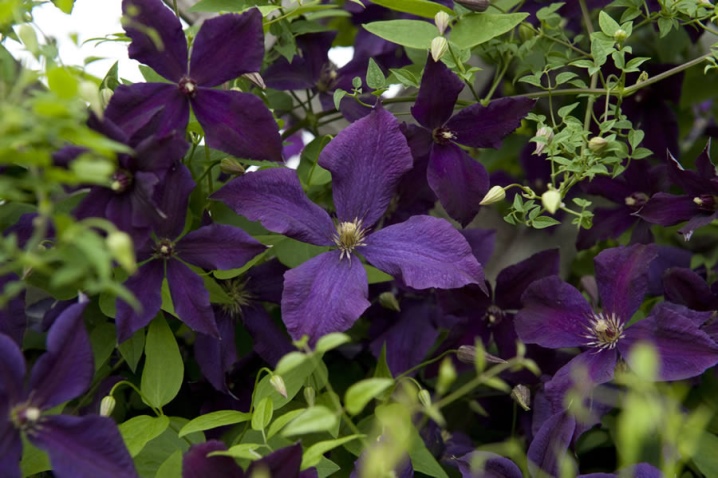
- "Florida";
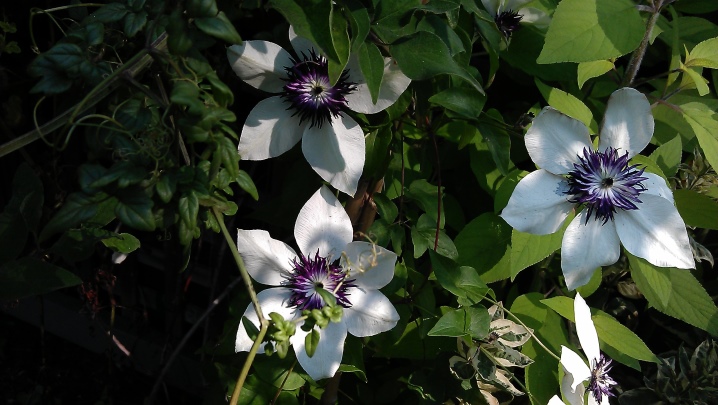
- Integrifolia.

These species differ in color and shape. The varieties of the "Zhakmana" group are the most widespread, largely due to the fact that their flowers are very large and beautiful. Many are similar to the clematis of the Lanuginoza group, and only a specialist can distinguish them. External characteristics:
- rather large liana-like representatives of the flora;
- excellent root development;
- the length can be up to 4 m;
- buds form on new branches;
- flowering of an abundant type, lasts a long time - from the first month of summer to the onset of autumn months.
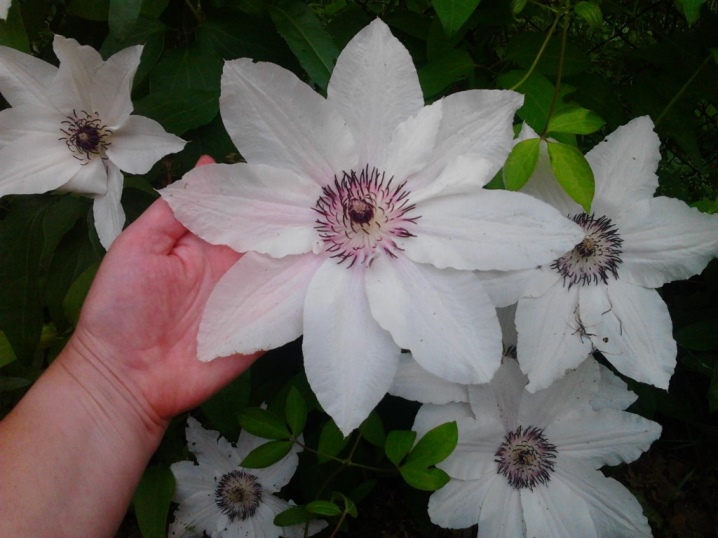
The most unpretentious varieties of the group:
Hagley Hybrid;
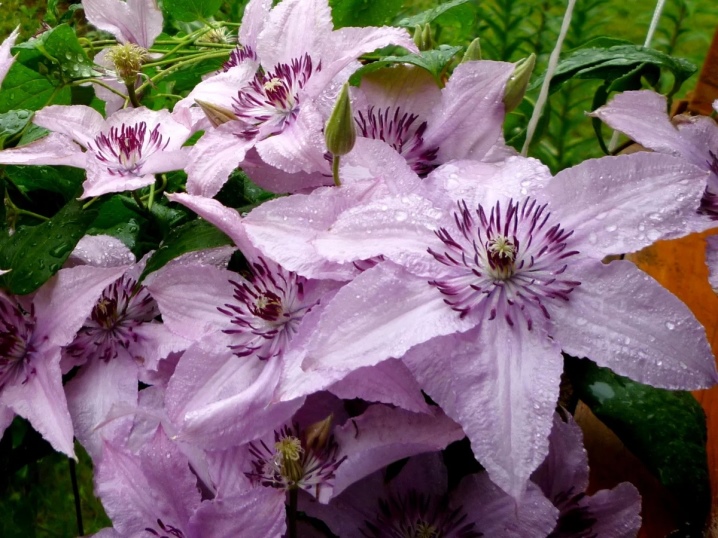
- Luther Burbank;

- "Cosmic melodies";
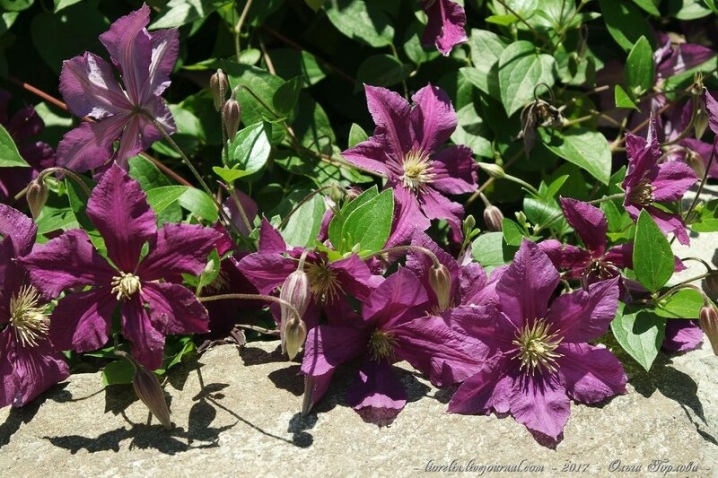
- Ernest Markham;
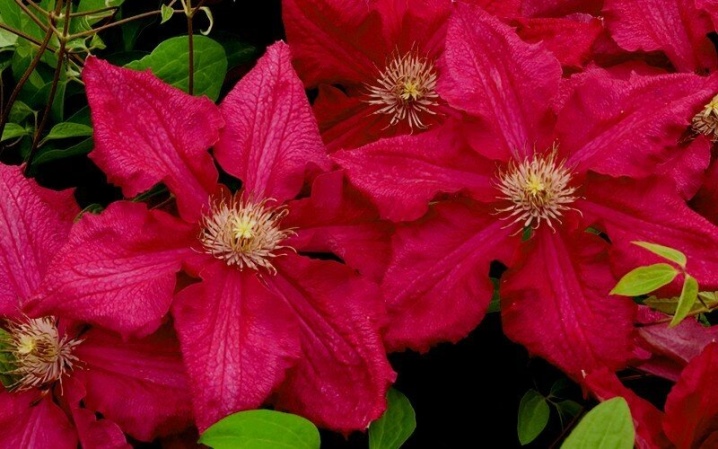
- "Gypsy King".
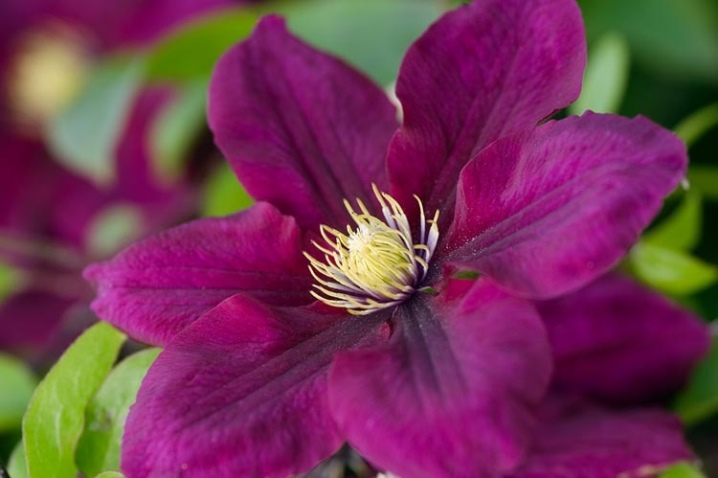
The "Lanuginoza" group is represented by varieties that bloom profusely on last year's and not abundantly on new branches. Flowering is large - about 20 cm. The color is mostly limited to tones of blue, red, purple. Pruning is done in the fall. The most famous varieties of the group:
"Ballerina";

- "Olympics 80";
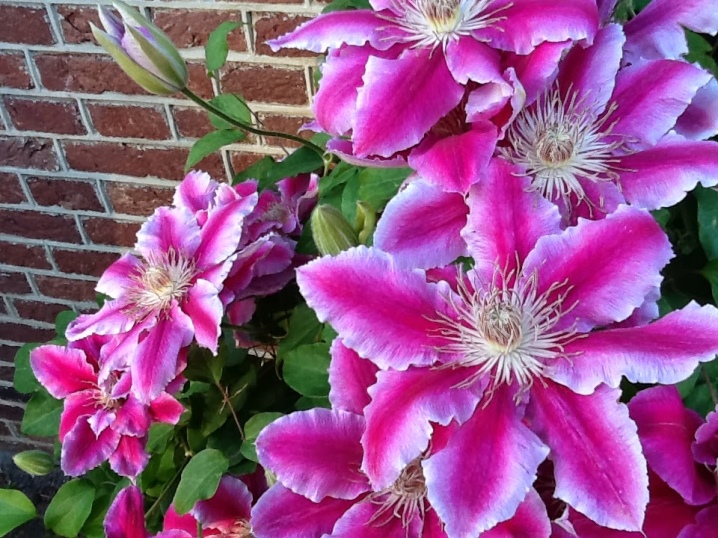
- "Flower Ball";
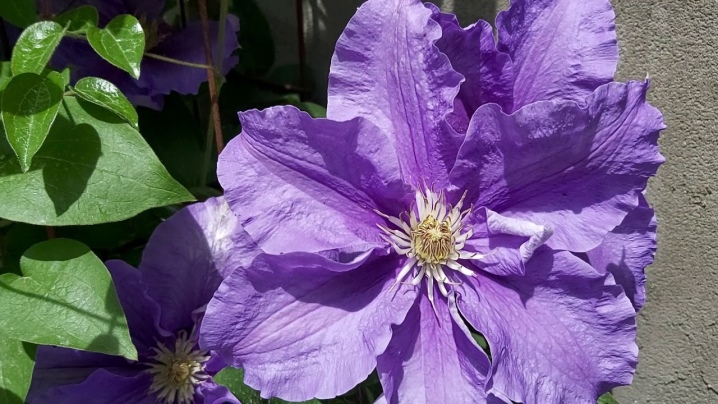
- "Hope".

The Patens group is represented by long vines of 3.5 m. They bloom both on last year's branches, and a little on newly formed ones. Before winter, only the part that has faded is cut off. They require shelter in the cold. Flowers of a single type, flatish, star-shaped. There are double flowers, inflorescences with terry. The size is about 8 cm. There are purple varieties, such as Andromeda. They grow on loosely fertile soil types, they love the sun. Height is approximately 3 m. A rich variety of blue-colored varieties:
Lord Neville;
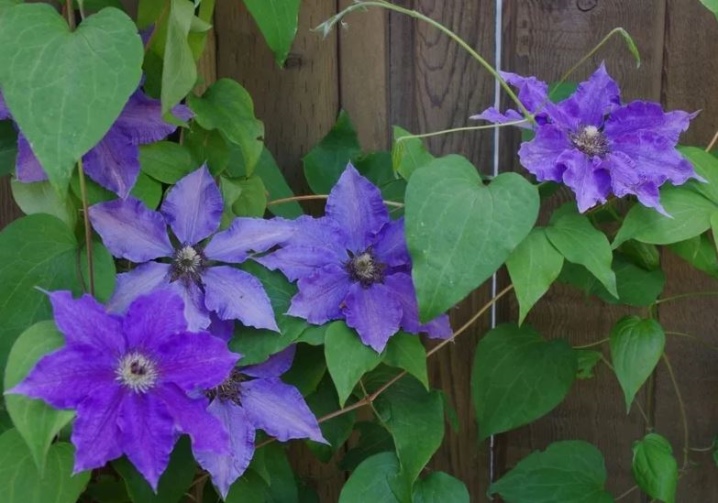
- "Multi Blue";
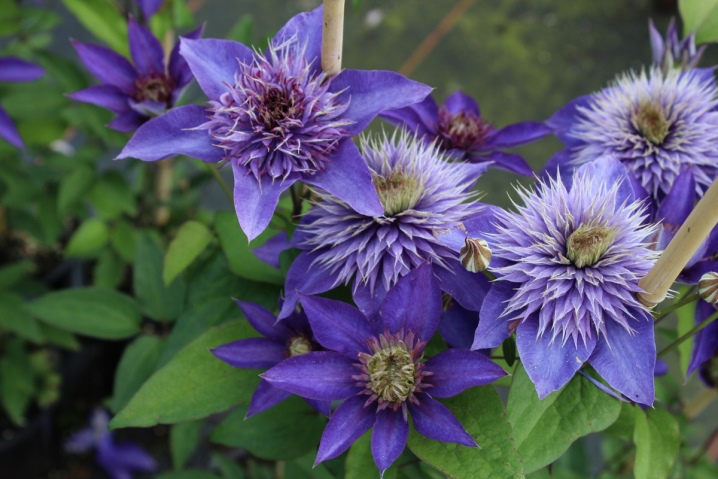
- Nelly Moser.
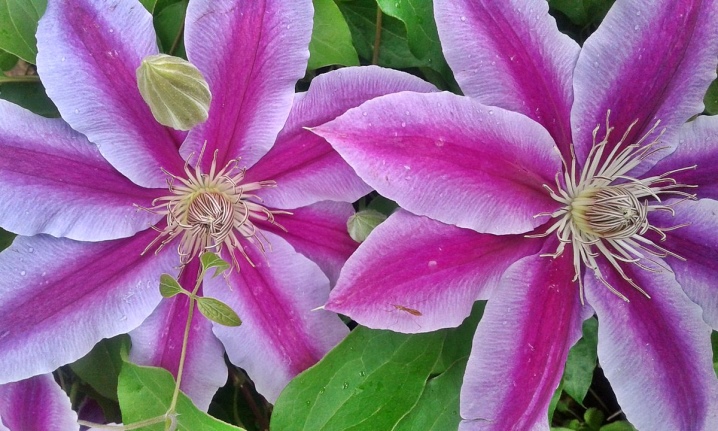
The Viticella group is recommended for people who begin their acquaintance with clematis... They are as unpretentious as possible to the climate and care. Height up to 3.5 m, buds are formed on newly formed branches. Abundant flowering, rather long in time. In the fall, there is a complete cut. The type of flowering is different: single, double, with and without semi-double. The maximum flower size is 12 cm. The colors are varied: from pale pink to red, purple. Famous varieties of the group:
Forest Opera;
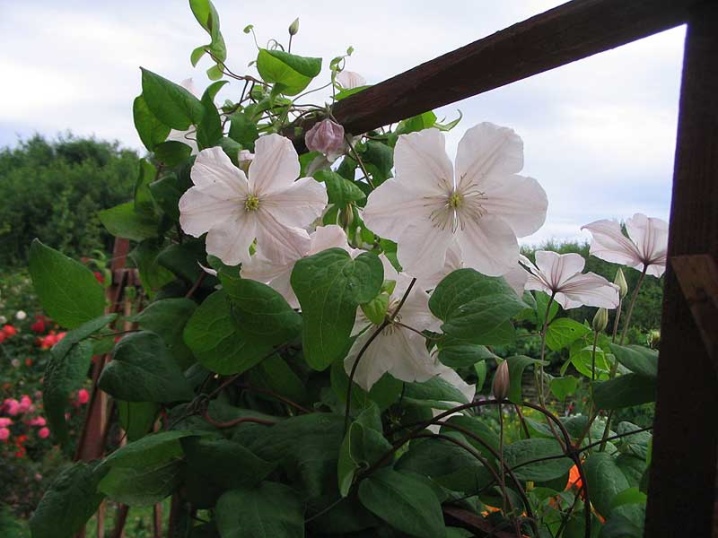
- Madame Grange;
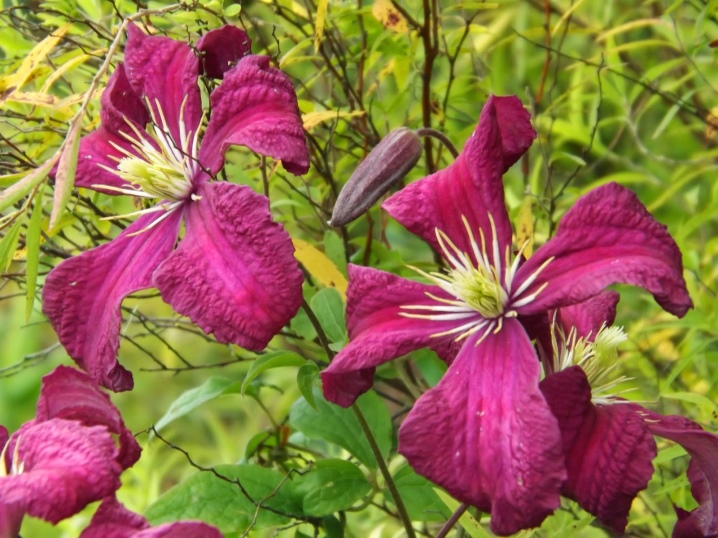
- Avangard;
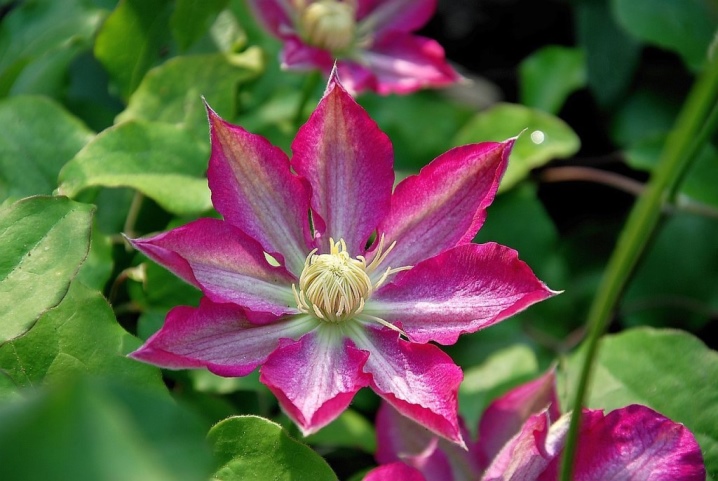
- "Captivity Elegance".
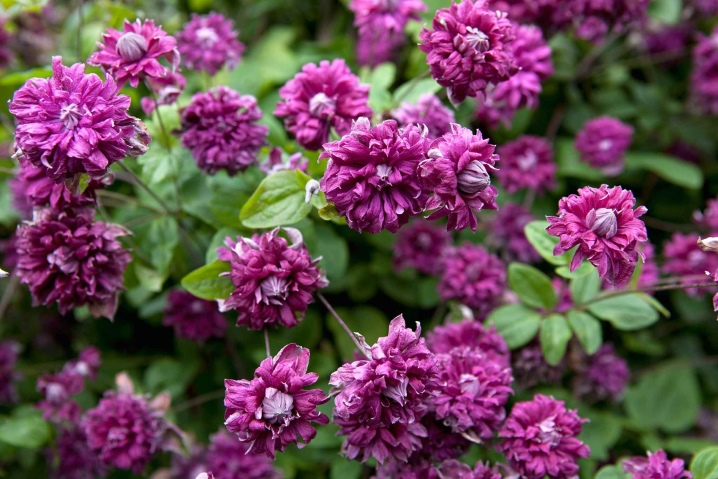
The Florida group is represented by liana-like dwarf shrubs with a height of about 3 m. They bloom on newly formed branches, pruning occurs in the fall, shortening to 2 m. The plant should be hidden from the cold. Flowering is double and semi-double, up to 12 cm in diameter. There are a lot of colors, mostly light. Famous varieties:
"Joan of Arc";
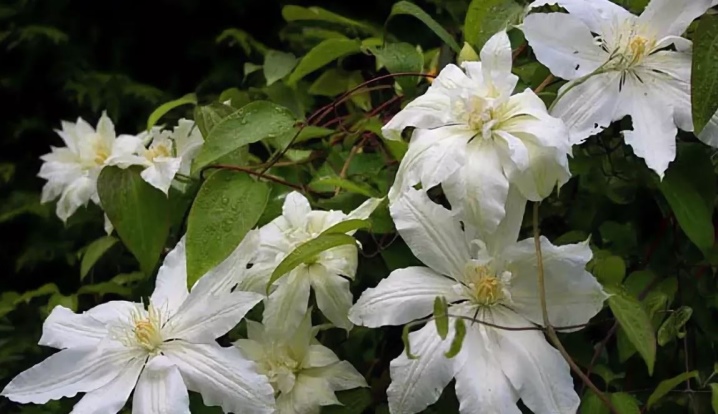
- Proteus;
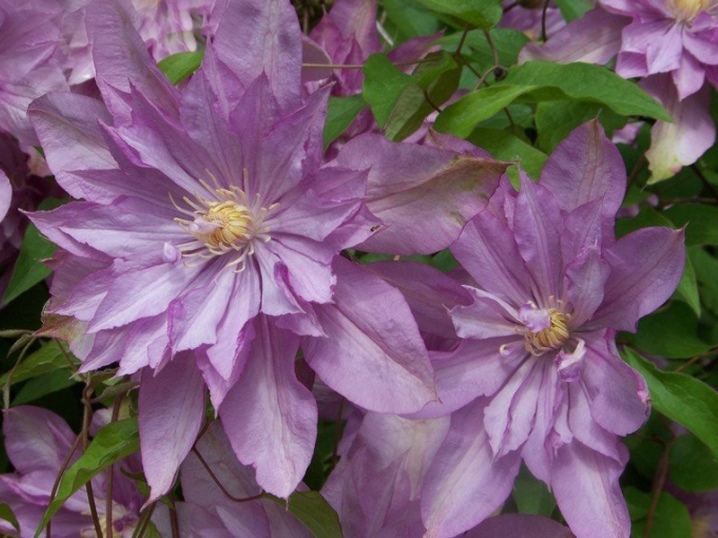
- Mrs. Cholmondeli;
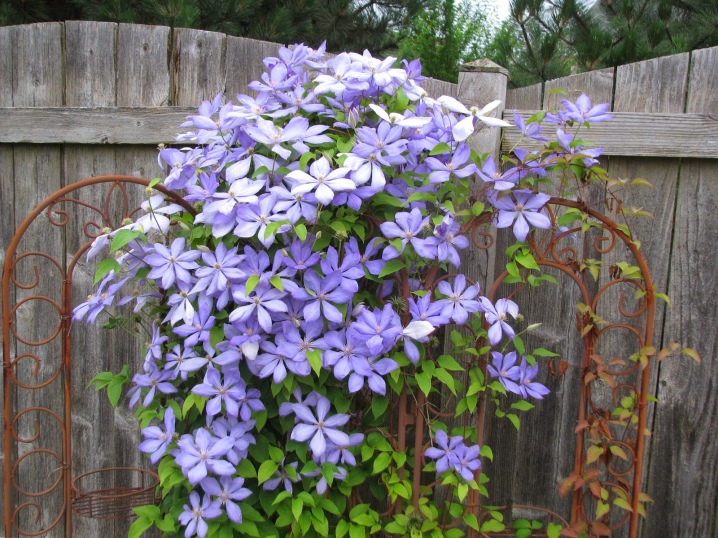
- Alba.
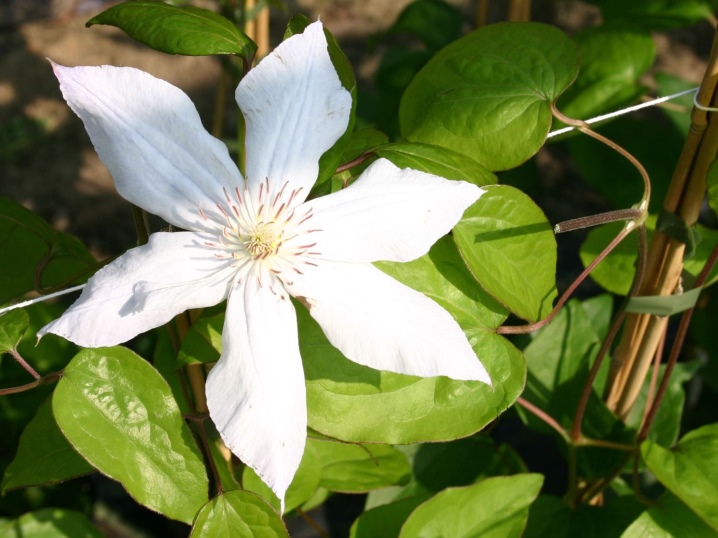
Group "Integrifolia" includes varieties of semi-herbaceous and semi-shrub type... The bottom of the woody species is preserved, and the top dies off annually. Representatives of the variety are wattle-like, but are not attached to the support. They need a garter or they will lie on the ground. The maximum height is up to 1.5 m. The bloom is spectacular, bell-shaped, very bright and beautiful. Famous varieties:
"Arabella";
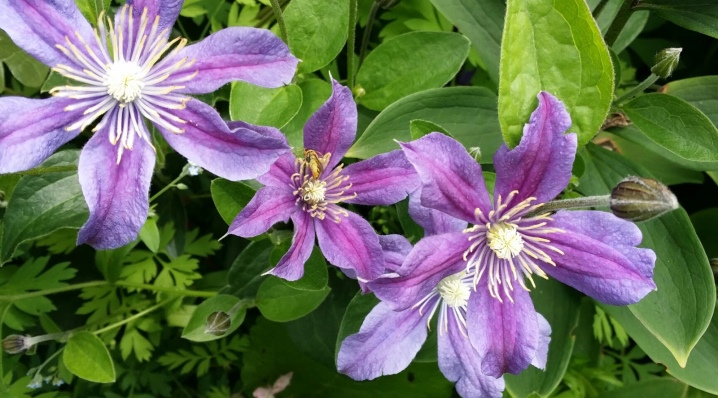
- "Memory of the Heart";
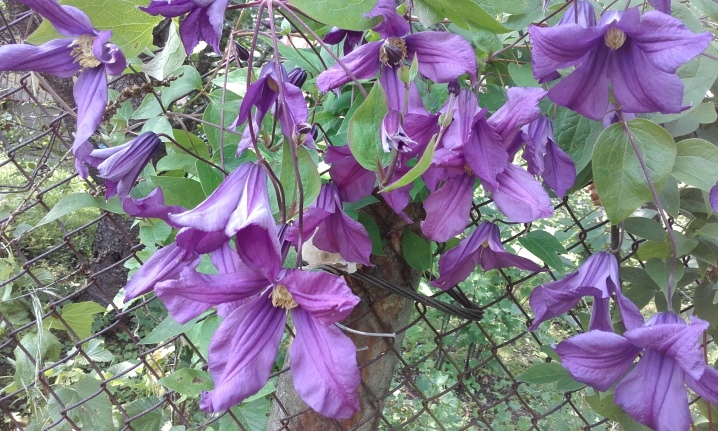
- "Alyonushka".
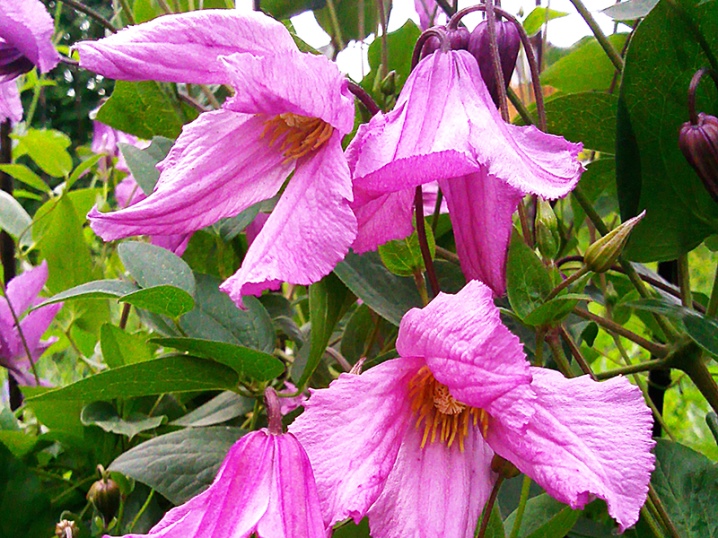
Breeders annually develop many new hybrid varieties of large-flowered clematis. The most beautiful and popular:
"Cloudburst" - has a bright lilac color with a pink tint;
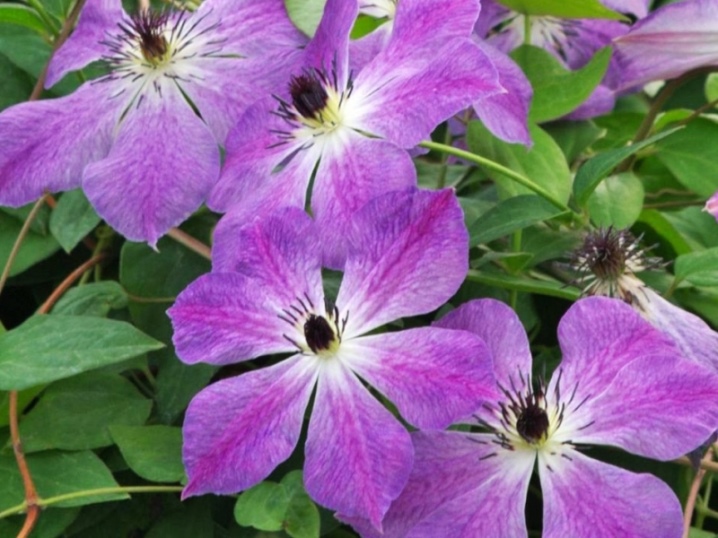
- "Haldain" - a graceful white flower with a greenish center;
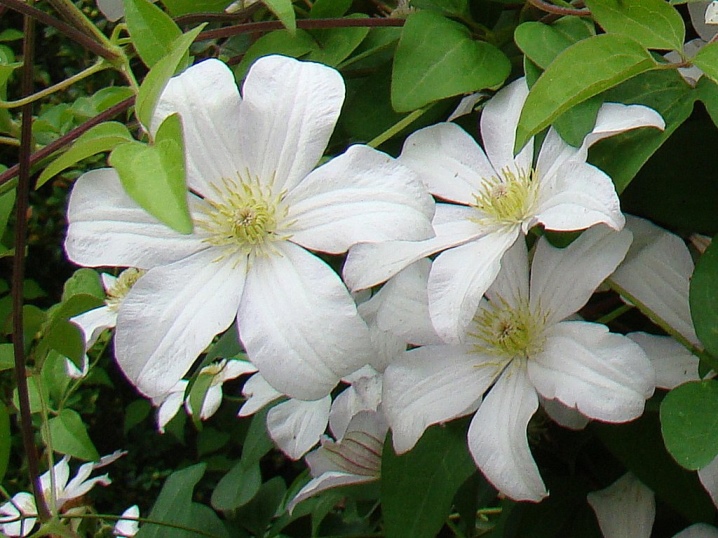
- "Innocent blush" - large double lush flowers of a light pinkish tone;

- Teshio - incredibly beautiful Japanese variety of expressive blue-blue color, multi-row flowers, original shape;
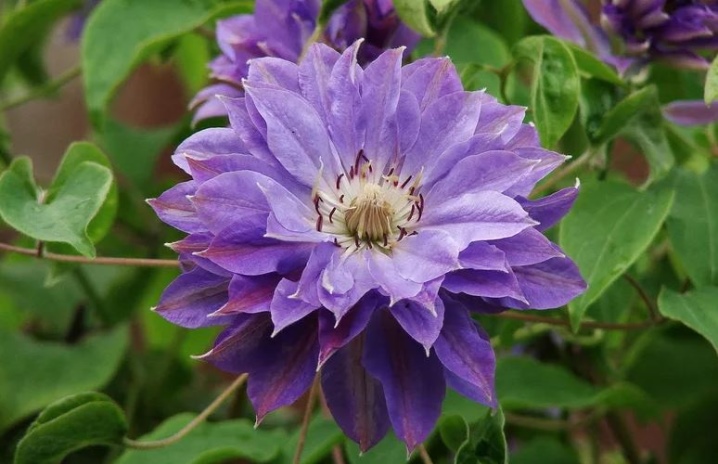
- "Yukikomashi" - luxurious white bloom with a bluish frame;
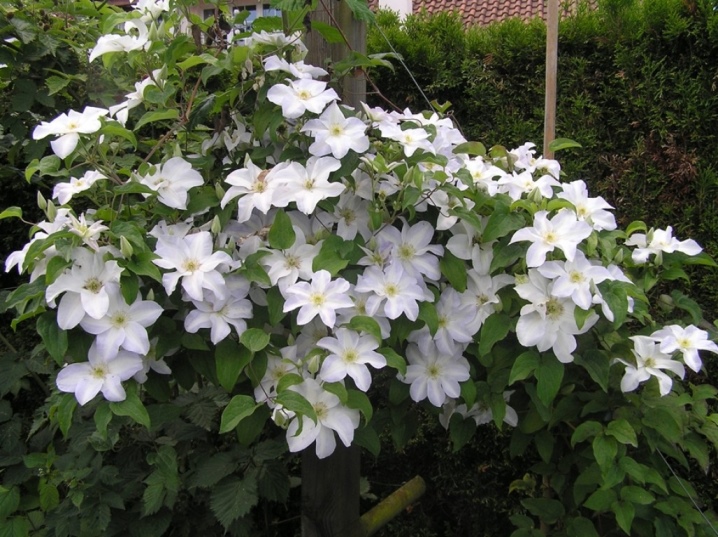
- "Mazuri" - lush multi-row flowering of light blue colors;
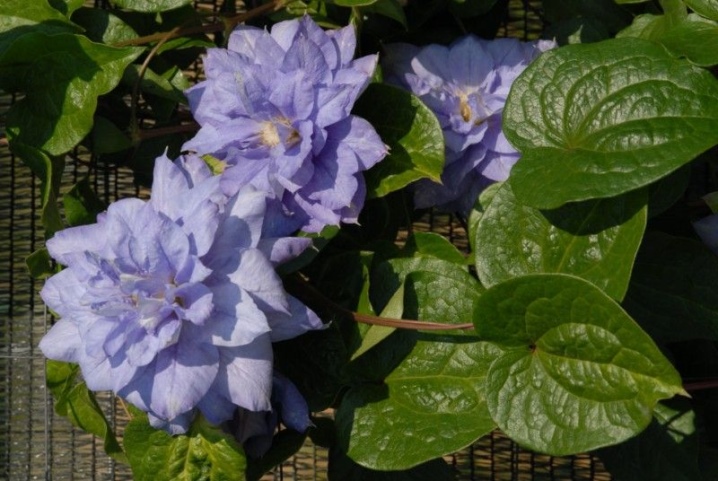
- "Innocent glans" - juicy pink color and lush shape of these flowers is very expressive;
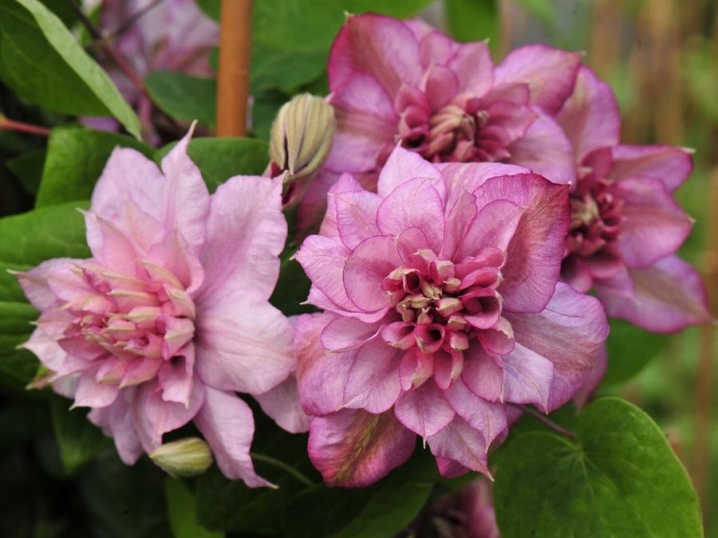
- "Dr. Ruppel" - an exquisite variety with a two-tone color, combining hot pink and white;
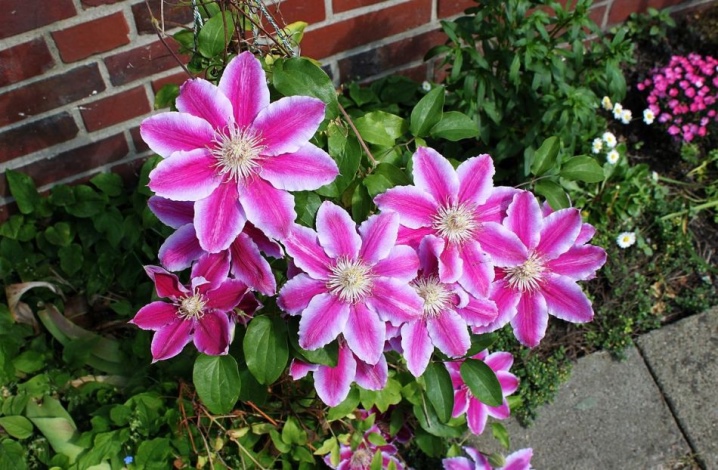
- Patricia Ann Fretwell - an incredibly spectacular variety with lush pink flowers, a high degree of decorativeness;
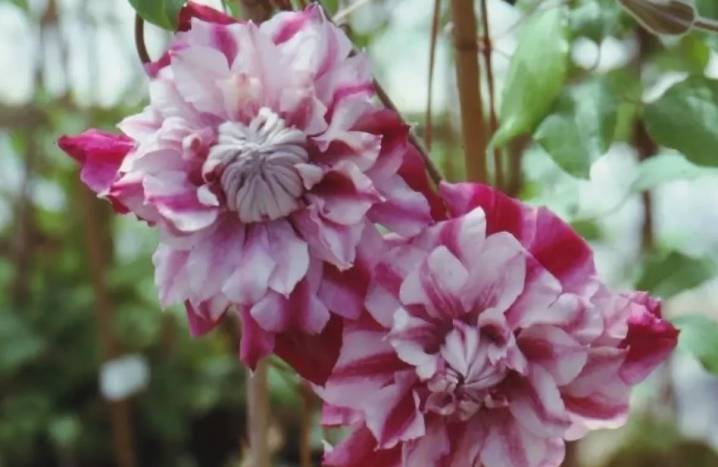
- "Veronica Choice" - light flowers, double or multi-row, have a gentle bluish tint;
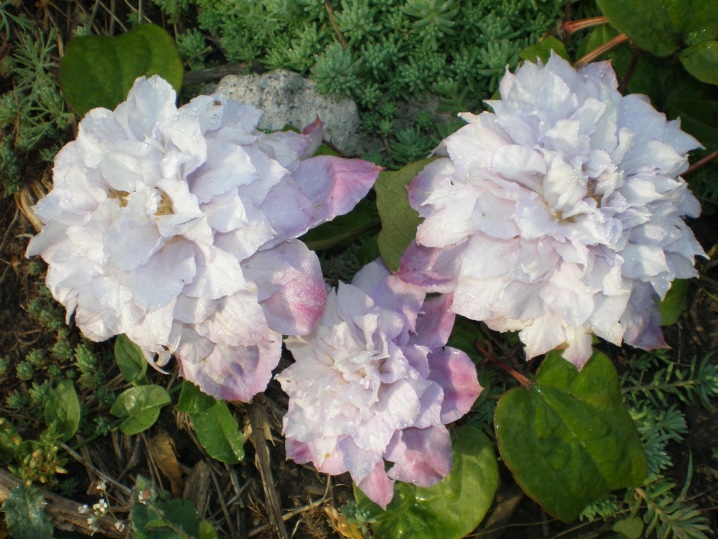
- Hoshi no Flamenco - single-row bright flowers of juicy crimson color with a yellow center;
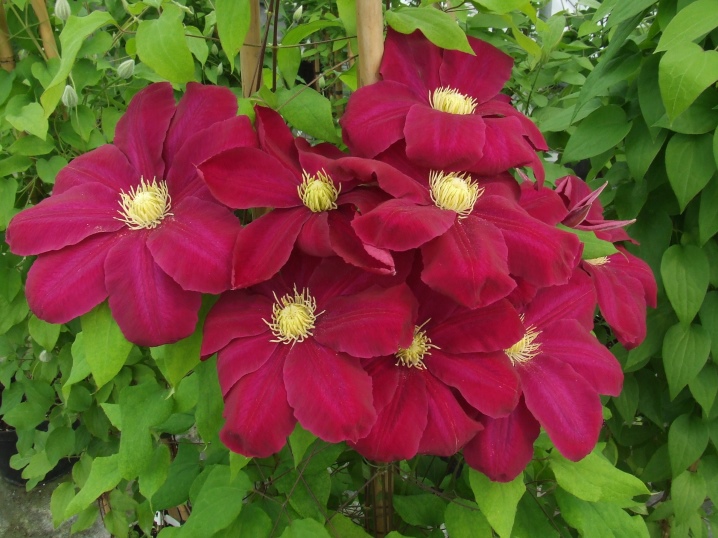
- "Caen" - multi-row flowering with a bright pink border and a light center of the petal;
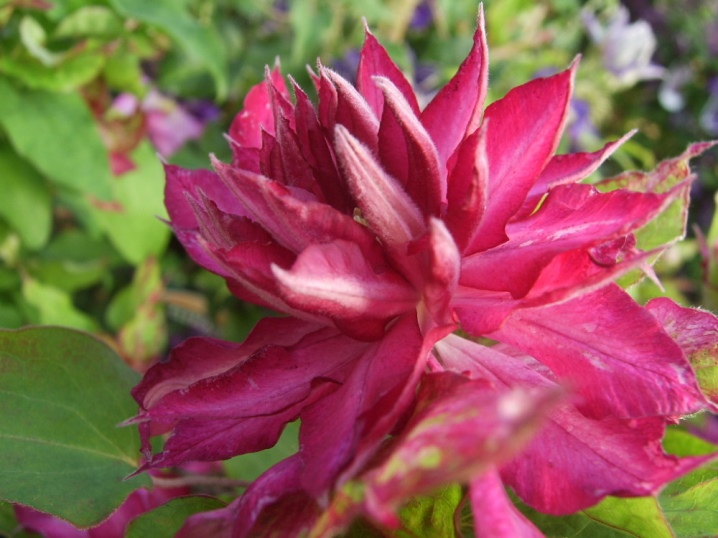
- "Vagabond" - it is distinguished by a rich purple shade with overflow and a neat flower shape;

- Little Mermaid - very delicate pink flower, large and graceful;
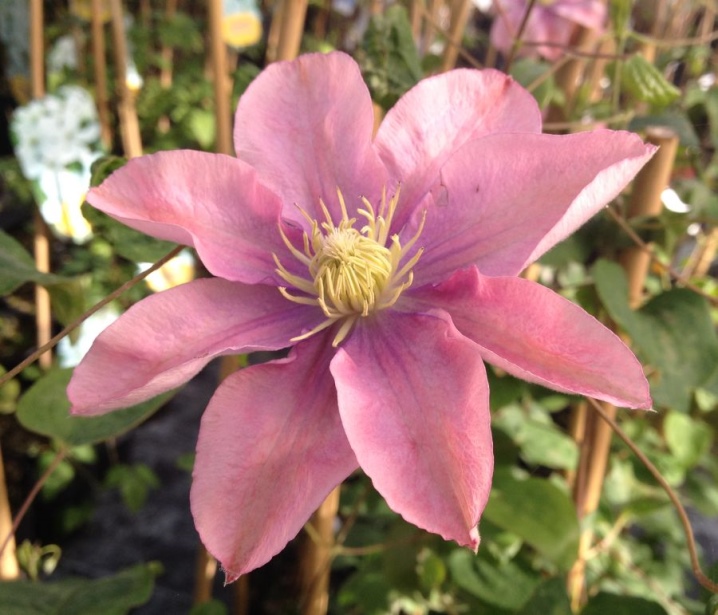
- "Jensi Cream" - snow-white bloom with a pale yellow center.

Planting and leaving
It is best to purchase ready-made seedlings in the spring or autumn. Clematis does not take root in summer and May, so you should not choose this time for disembarkation. A young plant is too vulnerable during this period. Clematis is planted in the sun or in partial shade so that the flowers are turned towards the light. The soil must be fertile, a drainage layer is formed in the pit before planting... Used as drainage pebbles, broken brick, sand.
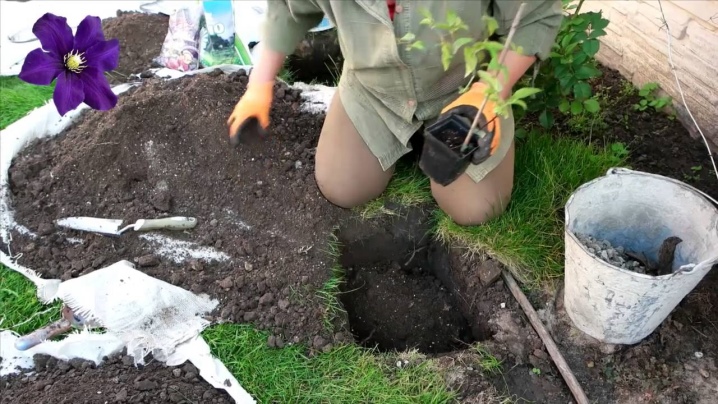
After strengthening the seedling and introducing the soil, the surface is moistened and mulched. Sawdust, shavings, hay are used as mulch. Clematis care is not too difficult. The main thing is to ensure watering on time - about once a week at the root. Moisture should not get on the flowers. Top dressing of a young plant is carried out 2 times per season - at the beginning with organic matter, at the end with the mineral complex.
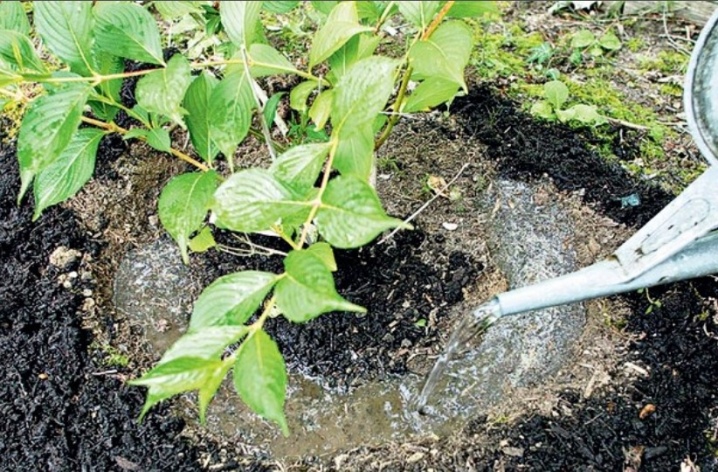
Diseases and pests
Viral diseases are rare in clematis, but fungal diseases are very common. To eliminate them, it is necessary to carry out treatment with fungicides. The most common diseases are:
- rust;
- gray rot;
- powdery mildew;
- wilt.

As for pests, the most dangerous are:
- spider mite;
- aphid;
- snails;
- slugs;
- caterpillars;
- mice;
- bears.
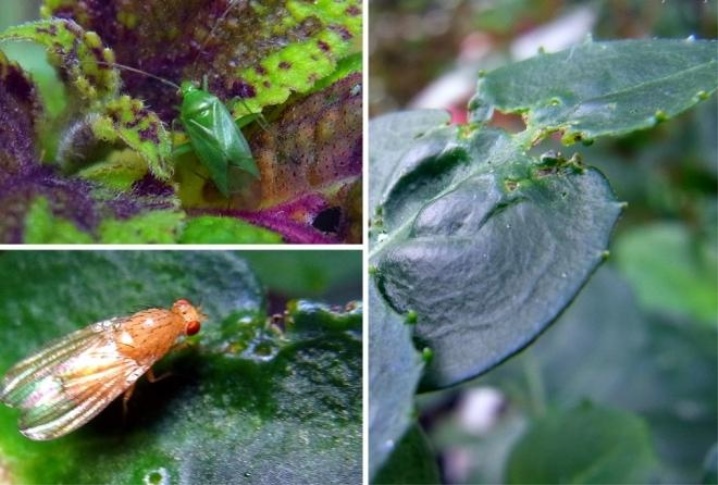
Some of them must be collected by hand, mice are poisoned with baits, other insects are treated with insecticides. As a preventive measure, it is recommended to treat the stems near the soil and the soil itself with a solution of "Fundazola" before the appearance of the first foliage and at the end of the growing season.
Reproduction
There are several ways to propagate clematis. Most popular and successful:
grafting - cuttings are placed in the ground or water before rooting, then planted;

- dividing a bush - in the fall, a bush is dug up, the roots dry out, washed, disinfected and transplanted;
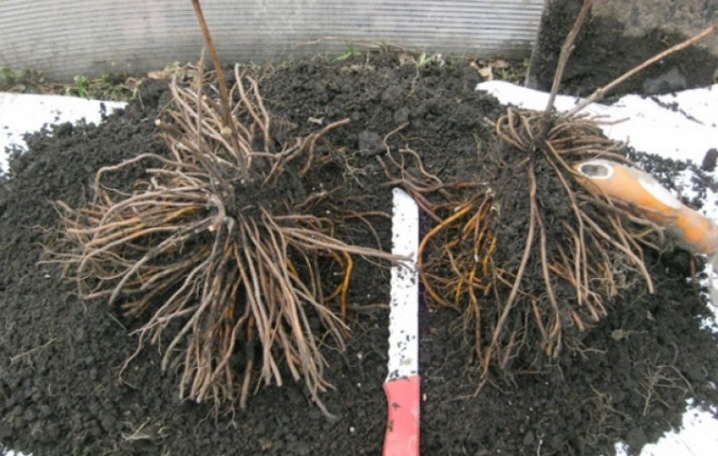
- rooting cuttings - carried out at any time of the year, layers are placed in the soil groove before rooting;
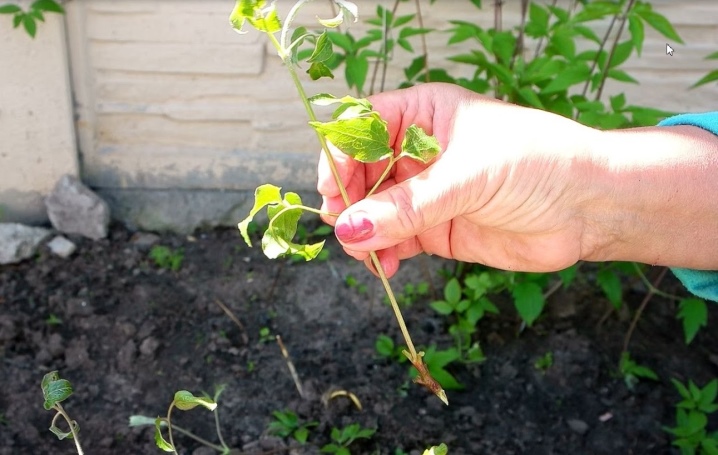
- seed method - not suitable for large-flowered species.

Vaccine reproduction is also possible, but this is a rather difficult method that requires experience and skills. It is used only by professionals to breed rare varieties. As for the seed method, it is difficult to preserve varietal characteristics in it, it is suitable only for small-flowered varieties.
For information on how to properly care for large-flowered clematis, see the next video.







































































































The comment was sent successfully.